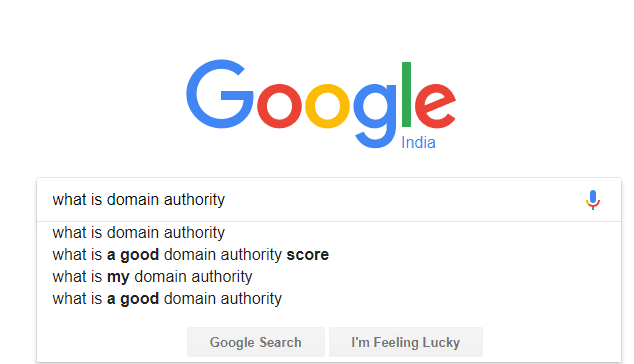Introduction to Traditional Marketing
Defining Traditional Marketing
Traditional marketing refers to the strategies and techniques used to promote products and services through offline channels. It predates digital marketing and includes methods such as newspaper ads, billboards, mail advertisements, and television and radio commercials. Understanding the definition of traditional marketing is essential for non-profit organizations aiming to enhance their outreach and engagement efforts. For a detailed insight, refer to our article on traditional marketing definition.
| Channel Type | Examples |
|---|---|
| Newspapers, Magazines, Brochures | |
| Broadcast | Television Ads, Radio Spots |
| Outdoor | Billboards, Banners |
| Direct Mail | Postcards, Flyers |
Traditional marketing is characterized by its ability to reach a broad audience, making it a suitable option for non-profits seeking to promote their causes effectively.
Evolution of Traditional Marketing
Traditional marketing has evolved significantly over the decades, particularly since the advertising boom of the 1950s when television gained immense popularity (Mailchimp). Initially, marketing strategies focused heavily on print advertising. As technology progressed, new mediums such as radio and television emerged, offering non-profits innovative ways to connect with their audiences.
With each evolution, traditional marketing has adapted to include various channels, creating a diverse array of options for organizations. This adaptability continues to serve non-profits effectively, allowing them to communicate their messages and drive engagement. For insights on how these traditional methods stack up against newer tactics, explore our discussion on traditional vs digital marketing.
In practice, non-profits utilize traditional marketing techniques to achieve specific goals such as fundraising, promoting their message, and engaging volunteers (Doxee). As non-profits face unique challenges in promoting their causes, understanding the evolution of traditional marketing provides a foundation for crafting effective marketing strategies. For statistics on how these strategies perform, consult our resource on traditional marketing statistics.
Benefits of Traditional Marketing for Non-Profits
Effective marketing strategies are essential for non-profits looking to raise awareness and engage supporters. Traditional marketing methods offer unique advantages that can greatly benefit non-profit organizations.
Wide Reach and Targeting Capabilities
One of the primary benefits of traditional marketing is its ability to achieve a wide reach. Traditional marketing channels, such as print media, television, and radio, allow non-profits to connect with a diverse range of audiences across various demographics. This is particularly advantageous for non-profits aiming to engage older adults or those who may not utilize digital platforms frequently.
| Traditional Marketing Channel | Potential Reach |
|---|---|
| Newspapers | 60% of adults read a newspaper each week |
| Television | Over 90% of households own at least one TV |
| Radio | 92% of Americans listen to the radio weekly |
In addition to broad visibility, traditional marketing can target individuals effectively in various settings—at home, while commuting, or out in public. This omnipresence amplifies opportunities to convert leads into donations and enhance support for your cause (Mailchimp).
Relatability to Older Audiences
Non-profits can benefit from the relatability of traditional marketing, especially when connecting with older audiences. Many older adults may prefer receiving information from familiar media sources rather than engaging with digital channels. By leveraging traditional avenues like print advertisements and local radio spots, your organization can resonate more deeply with this demographic.
Traditional marketing’s personal touch tends to evoke a stronger emotional response. This approach allows you to tell compelling stories about your mission and the impact of your work, strengthening connections with potential supporters. Emphasizing narrative-driven content can be a powerful way to cultivate community support and foster a sense of belonging among older audiences (Wild Apricot).
In summary, incorporating traditional marketing for non-profits can broaden your outreach and effectively engage with diverse demographics, particularly older audiences. Understanding the benefits of these techniques allows you to develop a comprehensive marketing strategy that enhances visibility and builds lasting relationships. For more information on the various types of traditional marketing methods, consider exploring traditional marketing methods.
Incorporating Traditional Marketing into Non-Profit Strategies
Traditional marketing remains a vital component of the marketing strategy for non-profits. By effectively utilizing print advertising and leveraging TV and radio advertisements, non-profit organizations can reach diverse audiences and communicate their mission effectively.
Utilizing Print Advertising
Print advertising is a powerful tool for non-profits, allowing organizations to share their message through physical mediums such as newspapers, newsletters, and brochures. This method enables you to reach a targeted local audience while providing tangible information about your mission and events.
Non-profit organizations can use print ads for fundraising campaigns, community outreach, and awareness initiatives. Furthermore, print media can enhance the credibility and visibility of your organization, particularly if you partner with local newspapers and community bulletins.
To illustrate the effectiveness of print advertising, consider the following points:
| Metric | Impact |
|---|---|
| Audience Reach | Print ads can target local communities effectively. |
| Engagement | Brochures can provide in-depth information and drive reader interest. |
| Trust | Established print publications often have higher credibility among audiences. |
For more insight into various print options, explore our resources on traditional marketing channels.
Leveraging TV and Radio Advertisements
TV and radio advertisements can be highly effective for non-profits looking to enhance their outreach. These mediums allow you to convey your message through sound and visuals, eliciting emotional responses that can encourage potential donors to act.
Television advertisements, while often associated with higher costs, can achieve significant reach and impact, especially when strategically placed during community events or during programs that align with your target audience’s interests. Similarly, radio advertisements provide a cost-effective means to reach demographics that may not be as engaged with digital advertising.
Here are key benefits that TV and radio advertisements can provide:
| Medium | Benefits |
|---|---|
| Television | High reach, visual impact, emotional storytelling |
| Radio | Cost-effective, local reach, target specific audiences |
When creating TV or radio advertisements, ensure that your messaging is clear and compelling. Highlight your organization’s goals and the specific actions you wish the audience to take. To delve deeper into various traditional techniques, visit our page on traditional marketing tactics.
Incorporating these traditional marketing methods into your strategy can create a solid foundation for expanding your reach and engagement, allowing you to connect with diverse stakeholders effectively. By utilizing both print and broadcast media, you can strengthen your non-profit’s ability to advocate for your cause and attract vital support.
Challenges of Traditional Marketing for Non-Profits
In the realm of traditional marketing for non-profits, organizations encounter unique obstacles that can hinder their effectiveness. Understanding these challenges can help you navigate them more effectively.
Limited Budget Constraints
Budget constraints are a significant hurdle for many non-profit organizations. Many nonprofits face lack of resources such as staff, time, funding, and marketing skills. In fact, lack of funding is often cited as a primary reason for marketing challenges (Taylor and Francis Online). As a result, these organizations may struggle to allocate funds for traditional marketing methods such as print advertising, TV, or radio campaigns.
The table below illustrates the average budget allocation for various marketing channels among non-profits, reflecting the limitations they often face:
| Marketing Channel | Average Budget Allocation (%) |
|---|---|
| Print Advertising | 25% |
| TV Advertising | 15% |
| Radio Advertising | 10% |
| Digital Marketing | 50% |
This restricted budget often leads to inadequate marketing resources and insufficient brand recognition. Consequently, non-profits may find it challenging to effectively connect with clients, volunteers, and donors/funders, which diminishes their overall marketing efforts.
Measuring Effectiveness and ROI
Another critical challenge in traditional marketing for non-profits is measuring effectiveness and return on investment (ROI). Non-profits often struggle to clear target markets, which makes it challenging to ascertain the true impact of their marketing campaigns. Increasing competition for limited resources magnifies the need for clear metrics to justify expenditures.
To demonstrate accountability and attraction to donors, it is essential for non-profits to establish robust metrics to track their impacts. As stakeholders want assurance that their contributions are making a difference, non-profits are encouraged to adopt outcome-focused evaluation frameworks. Frameworks such as the Logic Model or Social Return on Investment (SROI) can help organizations measure both tangible and intangible social impacts (LinkedIn).
The following table highlights key metrics that can be used to measure traditional marketing effectiveness:
| Measurement Metric | Description |
|---|---|
| Engagement Rates | Interaction levels with marketing materials |
| Donation Increases | Changes in donation levels post-campaign |
| Brand Recognition | Awareness levels of the organization’s brand |
| Activity Participation | Engagement from volunteers and event attendees |
Effective measurement allows non-profits to refine their marketing strategies, ensuring that resources are utilized efficiently across traditional marketing methods and other channels. By focusing on these challenges, you can devise strategies that enhance your non-profit’s ability to engage with its audience and make a lasting impact.
Strategic Partnerships for Non-Profit Marketing
Collaborating with businesses can significantly enhance your non-profit’s reach and effectiveness. By engaging in cause marketing, you can align your mission with a brand’s corporate values and create impactful initiatives that resonate with the community.
Collaboration with Businesses for Cause Marketing
Cause marketing represents a strategic alliance between non-profits and companies to promote social causes while bolstering brand loyalty. This approach goes beyond mere donations; it aims to engage consumers by aligning a brand with a social initiative to drive meaningful change (The Campus Agency). Successful cause marketing not only highlights the non-profit’s mission but also strengthens the corporate citizenship image of the partnering business.
When devising a cause marketing strategy, it is essential to identify causes that resonate with both your organization’s values and the company’s mission. By doing so, you facilitate a partnership that authentically engages consumers and drives action. Moreover, effective cause marketing campaigns can boost sales while promoting community involvement and social responsibility (The Campus Agency).
A partnership with a corporation can result in increased visibility for your organization, as companies often have access to larger marketing budgets and resources. This symbiotic relationship fosters goodwill and enhances public perception, ultimately leading to greater impact for your mission.
| Partnership Benefit | Description |
|---|---|
| Promotion of Causes | Aligning with a brand promotes awareness for specific causes. |
| Sales Boost | Collaborations can enhance product sales through community-oriented campaigns. |
| Corporate Citizenship | Showcasing commitment to social responsibility through partnerships. |
Leveraging Social Causes for Brand Alignment
Leveraging social causes for brand alignment requires a thoughtful approach. Effective cause marketing incorporates ethical considerations into the business strategy, demonstrating commitment to social issues while engaging consumers (The Campus Agency). A well-executed cause marketing initiative not only supports the non-profit’s mission but also helps the business cultivate a positive brand image.
It is vital for brands and non-profits to understand their target audience when implementing these strategies. By identifying what resonates with potential supporters, both entities can inspire action and create meaningful campaigns that reach wider demographics. For example, partnerships that include storytelling or community events can forge authentic connections between businesses and non-profits, leading to stronger engagement and support (LinkedIn).
Building these partnerships effectively requires transparency and a commitment to shared values. By showcasing clear impact metrics and accountability, non-profits can strengthen their relationships with donors and corporate partners alike.
| Key Component | Description |
|---|---|
| Cause Alignment | Ensuring the social cause resonates with both the business and its consumers. |
| Audience Understanding | Knowing what engages supporters to enhance campaign effectiveness. |
| Transparency | Demonstrating accountability and impact to foster trust and loyalty. |
Establishing strategic partnerships through cause marketing can amplify your traditional marketing efforts, enhancing the overall impact of your initiatives. For more insights on traditional marketing techniques, refer to our resources on traditional marketing examples and traditional marketing methods.
Integrating Digital and Traditional Marketing for Non-Profits
Importance of a Balanced Approach
In today’s dynamic marketing landscape, striking the right balance between digital and traditional marketing is essential for non-profit organizations. While traditional marketing channels, such as print and broadcast media, continue to offer effective outreach capabilities, digital marketing provides opportunities for engagement and interaction that are crucial for contemporary audiences. A well-integrated strategy that combines both forms can significantly enhance your reach and impact.
Research indicates that the combination of both traditional and digital marketing can be key to catering to a diverse audience (Mailchimp). By engaging with potential donors and volunteers through various channels, you can effectively manage your marketing budget while maximizing your outreach potential.
| Marketing Type | Key Advantages |
|---|---|
| Traditional | Established credibility, wide reach |
| Digital | Interactive engagement, targeted outreach |
Targeting Diverse Audience Segments
Understanding your audience is critical when implementing marketing strategies. Different segments of your audience may respond better to either traditional or digital methods. For instance, older demographics may prefer traditional forms of communication, while younger audiences gravitate towards digital platforms. By employing a dual approach, you can ensure your message resonates with varied groups, thus broadening your support base.
Utilize traditional marketing methods to reach local communities and those who may not be as active online. Simultaneously, digital marketing allows you to engage with tech-savvy individuals through social media, email campaigns, and online ads. This diversity in engagement helps you raise awareness, share success stories, and ultimately drive donations (LinkedIn).
| Audience Segment | Preferred Marketing Channel |
|---|---|
| Older Generations | Traditional Media (Print, TV) |
| Younger Generations | Digital Media (Social Media, Email) |
Integrating the strengths of both marketing approaches allows non-profits to deliver compelling messages to a broad audience. This balanced strategy not only enhances visibility but also fosters deeper connections with diverse supporter groups, thereby enhancing your overall effectiveness in achieving your charitable goals. To explore more about the effective use of different channels, check out our article on traditional marketing channels and traditional vs digital marketing.
Personalized Marketing Techniques for Non-Profits
Utilizing personalized marketing techniques can significantly enhance the effectiveness of traditional marketing for non-profits. Two key methods that stand out for non-profits are email marketing and video marketing.
Email Marketing Strategies
Email marketing serves as a vital communication tool for non-profit organizations. It offers a unique way to report results achieved from donations collected and express gratitude to donors. Customizing emails based on donor preferences and previous interactions can lead to higher engagement rates.
To enhance your email marketing effectiveness, consider the following strategies:
| Strategy | Description |
|---|---|
| Segmentation | Divide your email list into segments based on donation history, interests, or engagement levels to send targeted messages. |
| Personalization | Use the recipient’s name and tailor content to their specific interests or past contributions. |
| Impact Reports | Regularly update donors with information on how their contributions have been utilized, which fosters transparency and trust. |
| Donor Appreciation | Send personalized thank-you emails highlighting the importance of the donor’s role in furthering your mission. |
By implementing these strategies, you can improve donor retention and engagement.
Video Marketing Impact
Video marketing is increasingly vital for non-profit organizations aiming to amplify their message. It boosts visibility, enhances engagement, and fosters emotional connections with supporters. Videos can be employed to raise awareness, support fundraising campaigns, and provide educational content (Doxee).
Key features of effective video marketing include:
| Video Type | Purpose |
|---|---|
| Donor Testimonials | Showcase real experiences and stories from supporters to establish trust and emotional connections. |
| Impact Videos | Highlight the tangible effects of donations, illustrating how contributions drive change in the community. |
| Educational Content | Provide valuable information about your mission, programs, and the challenges you aim to address. |
| Calls to Action | Conclude videos with clear actions for viewers, e.g., donating or volunteering, to encourage direct participation. |
Utilizing storytelling through video can captivate hearts and minds, enhancing long-term engagement and support (Wild Apricot). By integrating both email and video marketing into your traditional marketing strategies, you can create more personalized, impactful interactions with your audience. For further insights, explore our articles on traditional marketing methods and traditional marketing channels.
Measuring Success in Non-Profit Marketing
Evaluating the success of your non-profit marketing initiatives is vital for ensuring that your organization meets its objectives and maximizes its outreach. Two key areas to focus on are tracking engagement and donations, as well as establishing impact metrics.
Tracking Engagement and Donations
Tracking engagement encompasses various activities, including monitoring how audiences interact with your marketing efforts, the response to your campaigns, and the overall donor engagement. Key performance indicators (KPIs) to consider include:
| Metric | Description |
|---|---|
| Website Traffic | Measuring visits to your site can indicate interest generated by campaigns. |
| Social Media Engagement | Likes, shares, comments, and follows help gauge audience interaction. |
| Email Open Rates | Indicates how well your emails resonate with recipients. |
| Donation Amounts | Tracking donation totals provides a direct reflection of campaign success. |
Establishing a system for collecting this data can enhance your strategies over time and allow for adjustments based on audience preferences and responses. Tools like Google Analytics and social media insight tools can provide valuable information to assess these metrics effectively.
Establishing Impact Metrics
Establishing impact metrics involves a deeper assessment of how your marketing strategies influence your mission and goals. Key factors to evaluate may include:
- Program Growth: Assessing the increase in programs supported as a result of marketing efforts.
- Community Engagement: Measuring the level of community participation in your initiatives.
- Awareness Levels: Conducting surveys to gauge public awareness of your organization and its mission before and after campaigns.
A useful approach is to implement a structured evaluation plan that outlines specific goals for each campaign and defines what success looks like. This plan should also identify how to measure these goals effectively. Setting measurable objectives, such as a 20% increase in donations or a specific number of new volunteers, will help you align your marketing efforts with your non-profit’s mission.
Integrating these metrics with your broader strategic goals reinforces your commitment to transparency and accountability. By showcasing the effectiveness of your marketing initiatives, you can enhance trust and credibility within your community and with stakeholders.
For more on effective strategies within non-profit marketing, consider exploring our articles on traditional marketing strategies and traditional marketing techniques.
Building Relationships and Engagement
Creating deep and meaningful connections with your audience is essential for achieving long-term success in non-profit marketing. By employing effective storytelling techniques and leveraging social media, you can engage your donors and build stronger relationships that will enhance your organization’s credibility and support.
Storytelling for Donor Engagement
Storytelling is a powerful tool in non-profit marketing. When you share compelling narratives about your cause, you have the ability to resonate with potential donors and inspire them to take action. Effective stories not only highlight the challenges faced by the community or individuals you serve but also showcase the positive impact of your organization’s work.
To enhance engagement, consider the following storytelling approaches:
Personal Stories: Share testimonials from beneficiaries whose lives have changed due to your organization’s efforts. Personal anecdotes foster emotional connections with your audience.
Impact Data: Combine narratives with statistics that reflect the significance of your work. For instance, stating that “85% of beneficiaries report improved outcomes because of our programs” lends credibility to your story.
Visual Storytelling: Utilize visual content, such as videos and photographs, to complement your written stories. Images can often convey powerful emotions that words cannot capture.
Non-profits successfully leverage storytelling in various ways, from compelling newsletters to impactful fundraising campaigns. For further insights into different strategies, refer to examples of traditional marketing methods and traditional marketing campaigns.
Leveraging Social Media for Connection
Social media platforms are invaluable for building engagement and fostering connections in the digital age. As you integrate traditional marketing with these modern tools, you can expand your reach and connect with diverse audience segments. Here are some tactics to consider:
Regular Updates: Maintain an active social media presence to share updates about your work, upcoming events, and stories that matter. Consistency ensures that your audience remains informed and engaged.
User-Generated Content: Encourage your supporters to share their own stories and experiences related to your organization. Highlighting the voices of your community fosters a sense of belonging and loyalty.
Influencer Collaborations: Partnering with social media influencers can amplify your message and attract a wider audience. By aligning with figures who share your mission, you can create impactful campaigns that resonate with their followers.
Interactive Engagement: Use polls, quizzes, and Q&A sessions to interact with your supporters. This type of engagement invites participation and builds a two-way relationship.
By effectively integrating storytelling with social media strategies, you can engage your donors and cultivate a loyal supporter base. For an overview of how to balance both traditional and digital marketing strategies, explore our resource on integrating traditional and digital marketing.
Ultimately, building relationships based on authentic engagement is vital for enhancing your organization’s impact through traditional marketing for non-profits.




















